- europages
- >
- COMPANIES - SUPPLIERS - SERVICE PROVIDERS
- >
- wastewater treatment systems
Results for
Wastewater treatment systems - Import export
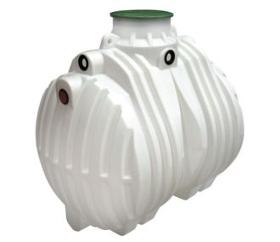
APLAST D.O.O.
Slovenia
With the purpose of protection of our natural environment and ground water, a new legislation has been introduced years ago, which manages the field of municipal waste water disposal. Owners of buildings, which don't have waste water pipes connected to a common purification device, must ensure the purification of waste waters with a wastewater treatment system. The most economical and environmentally friendly option is a biological wastewater treatment system. It is distinguished by a very high purification level (from 91% to 95%), so the law allows for purified water to return to the natural environment. We produce containers for multiple Slovenian and foreign companies.
Request for a quote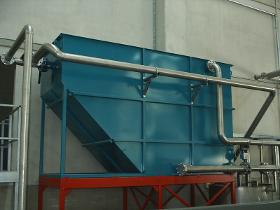
MITA WATER TECHNOLOGIES
Italy
The flow of oil and water is introduced to the tank and distributed in a homogeneous way across the whole cross-section. They are composed of a containment tank which can be manufacturedfrom treated and painted carbon steel or AISI 304 stainless steel; lamellar pack with parallel channels in rigid polystyrene, stabilized agains UV radiation. Special materials and executions are available on request. Typical applications: first fall rain water, petrochemical plants, mechanical workshops, refineries and depots of hydrocarbons, washing of vehicles, land reclaim, refuse handling centres. -High solid-liquid separation efficiency -Simplicity of installation and operation -Compact execution -Low first costs and plant management costs
Request for a quote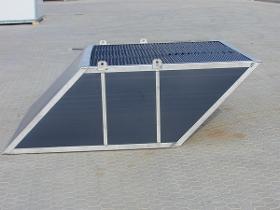
MITA WATER TECHNOLOGIES
Italy
The flow of oil and water is introduced to the tank and distributed in a homogeneous way across the whole cross-section. They are composed of just the parallel channel lamellar pack in rigid polystyrene, stabilized against UV radiation, closed in an AISI 304 containment frame; they are normally employed for housing in concrete tanks specifically built for the purpose of holding lamellar packs. Features Available height: 0,85 m Available widths: from 0,60 m to 2,20 m Available lengths: from 1,00 m to 3,00 m -High solid-liquid separation efficiency -Simplicity of installation and operation -Compact execution -Low first costs and plant management costs
Request for a quote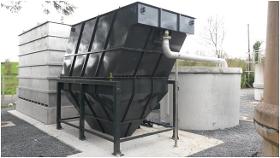
MITA WATER TECHNOLOGIES
Italy
The flow of water and sludge coming from the previous phases of treatment (whether biological or physical-chemical) is introduced into the intermediate zone of the tank, just below the lamellar pack. Lamellar pack single-piece clarifiers for the sludge settling. They are composed of: containment tank which can be manufactured from, at choice, treated and paintedcarbon steel or in AISI 304 stainless steel; lamellar pack with parallel channels in rigid polystyrene, stabilized against UV radiation; surface discharge trough (with weir) in AISI 304; intermediate distributor of the feed flow. Special materials and executions are available on request. FM – L SERIES (11,30 m2/m3 equivalent surface) Typical applications: secondary clarification of biological sludge, drinking water plants, upgrading of existing clarifiers, rain water treatment. -High solid-liquid separation efficiency -Simplicity of installation and operation -Compact execution -Low first costs and plant management costs
Request for a quote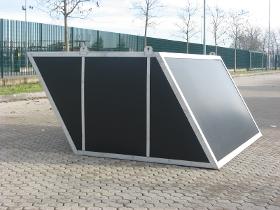
MITA WATER TECHNOLOGIES
Italy
The flow of water and sludge coming from the previous phases of treatment (whether biological or physical-chemical) is introduced into the intermediate zone of the tank, just below the lamellar pack. Lamellar packs with frame for sludge removal. They are composed of the parallel channel lamellar pack in rigid polystyrene, stabilized against UV radiation, closedin an AISI 304 containment frame; they are normally employed for the upgrading of existing clarifiers or for housing in concrete tanks specifically built for the purpose of holding lamellar packs. F – L SERIES (equivalent surface 11,30 m2/m3) F – I SERIES (equivalent surface 14,90 m2/m3) F – S SERIES (equivalent surface 20,00 m2/m3) -High solid-liquid separation efficiency -Simplicity of installation and operation -Compact execution -Low first costs and plant management costs
Request for a quote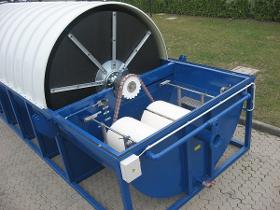
MITA WATER TECHNOLOGIES
Italy
The advantages of cloth filters and biorulli in a compact system for small community water treatment. Compact system for the biological purification treatment with biodiscs combined with cloth filter for the separation of excess sludge. The biocombi compact system features two treatment phases (biological treatment and separation of excess sludge) gathered in a single tank. The standard model provides the complete provision of a carbon steel tank treated and painted with a fiberglass modular cover easily removable, and an electrical switchboard on the machine with IP 55 protection. The moving parts (disc roller and drum filter) are actuated by a single geared motor with power included between 1,10 and 1,50 kW. -Minimum energy consumption -Reduced maintenance -Easy accessibility -Increased floor space (compact construction)
Request for a quote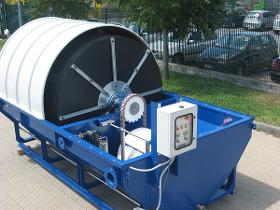
MITA WATER TECHNOLOGIES
Italy
The advantages of cloth filters and biorulli in a compact system for small community water treatment. Compact system for the biological purification treatment with biodiscs combined with cloth filter for the separation of excess sludge. The biocombi compact system features two treatment phases (biological treatment and separation of excess sludge) gathered in a single tank. The standard model provides the complete provision of a carbon steel tank treated and painted with a fiberglass modular cover easily removable, and an electrical switchboard on the machine with IP 55 protection. The moving parts (disc roller and drum filter) are actuated by a single geared motor with power included between 0,75 and 1,10 kW. -Minimum energy consumption -Reduced maintenance -Easy accessibility -Increased floor space (compact construction)
Request for a quote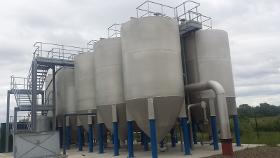
MITA WATER TECHNOLOGIES
Italy
The standard model is made with wetted parts manufactured in AISI 304, the support legs in treated and painted carbon steel, filter element of quartz sand of suitable grain size. Special executions and alternative materials are available on request. Typical applications: tertiary treatment of civil and industrial waste water, surface water clarification, treatment of drinking water, primary filtration of civil and industrial waste water, clarification of metallurgical industry cooling water, algae removal, pre-treatment for ultra-filtration membrane installations, pre-treatment for ozonisation plants, finishing treatment with active carbon. - Low first costs and plant management costs - High efficiency and reliability for the removal of suspended solids, even colloidal - Exclusive backwash system which uses raw water rather then filtered water - External sand recirculation system - Ease of installation Possibility of gravity feed, thanks to its low pressure drops
Request for a quote
MITA WATER TECHNOLOGIES
Italy
Mitadaf is an innovative dissolved air flotation system. Its exceptional solid/liquid separation and/or sludge thickening efficiency is the result of the combined systemof uniform hydrodynamics and filtration with a bed of micro air-bubbles: an equipment of new concept developed by MITA. The heart of the mitadaf system is the multifunctional central column, by means of which the raw sewage is introduced into the tank, the clarified effluent water is recovered and the sludge exits. The raw influent water, suitably saturated with air, is introduced into the flotation tank via a series of holes located in the lower part of the central column. The entering mix, propelled by the micro-bubbles of air, immediately reaches the surface, homogeneously distributed across the whole flotation area (uniform hydrodynamic system).
Request for a quote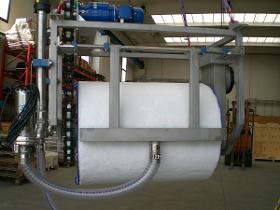
MITA WATER TECHNOLOGIES
Italy
The best solution for tertiary filtration: high solid removal yields, minimum water and energy consumption. In the TF – TV VM (VM = metal tank) series the cloth support is made of a perforated metal sheet drum. This model is used for wastewater treatment plants of small working capacity (up to 2.000 PE) or as a secondary treatment downstream from immobilized biomass systems. It is available for installation in concrete tanks or metal tanks versions. The equipment is supplied with an electrical switchboard. - Gravity filtration with limited head loss. - Continuous filtration without standby units for the backwash phases. - Cloth filter in polstoff free fibre provided with high mechanical strength. - High filtration rate (concentrations of TSS < 5 mg/l at discharge).
Request for a quote
CDI VALLÈS S.L.
Spain
Microbial powder formulation designed to reduce mud build-up in ponds AG120 is a microbial powder formulation designed to reduce organic sludge build-up in ponds used for irrigation systems, wastewater treatment, etc. Ponds experiencing excessive organic sludge can benefit from this treatment as it is a cost-effective alternative to mechanical drainage which requires equipment (pumps, mechanical shovels, etc.) and whose sludge must be removed by time-consuming, expensive and potentially damaging operations to the bottom of the ponds.
Request for a quote
ENDRESS+HAUSER AG
Switzerland
Liquiline System CA80PH offers online orthophosphate measurement for precise dosing of precipitants in wastewater treatment. As all Liquiline System analyzers, it enables plug & play of up to 4 Memosens sensors - minimizing the installation effort. Automatic calibration and cleaning and the low consumption of reagents save you operating costs. Advanced diagnostics with remote access ensure process safety and support you in providing process documentation to the authorities.
Request for a quote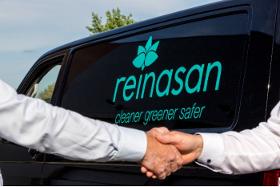
REINASAN BV
Netherlands
The methods we develop are implemented by partners within their operations. These methods are incorporated into partner programmes. Our partner programmes contain complete methods with 24/7 active, safe and environmentally friendly products that contribute to cleaner and safer objects and surface species. It not only offers a partner the opportunity for extra turnover, but at least as important is the extra service to the partner's (end) customer. The ROI is quickly realised and creates the opportunity to stand out within your own market. Also, the method fits in perfectly with the EU Green Deal. A wonderful contribution to a greener future! By applying the Reinasan protection, the partner creates various additional benefits on products, objects or other surface types. Some examples: objects become Easy to Clean, maintain their anti-slip value, hygiene is optimised, aesthetics. We are looking for distributors with a network for B2B. Let us together realise a green footprint.
Request for a quote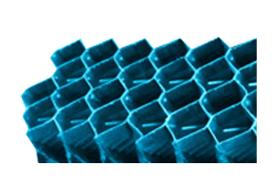
NILFAM ENGINEERING COMPANY
Iran
The major advantage of Nilfam lamella clarifiers over other clarifying systems is the vast effective settling area which is caused by the use of inclined PVC plates. It improves the operating conditions of the clarifiers in different ways. Our lamella are more compact usually requiring only 65-80 % of the area of other clarifiers operating without inclined plates. They are very durable and can be used for long periods of time.
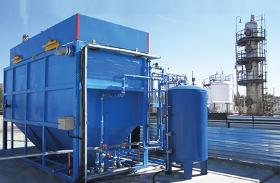
NILFAM ENGINEERING COMPANY
Iran
When particles to be removed do not settle out of solution easily, dissolved air flotation (DAF) is often used. Water supplies that are particularly vulnerable to unicellular algae blooms and supplies with low turbidity and high color often employ DAF. After coagulation and flocculation processes, water flows to DAF tanks where air diffusers on the tank bottom create fine bubbles that attach to floc resulting in a floating mass of concentrated floc. The floating floc blanket is removed from the surface and clarified water is withdrawn from the bottom of the DAF tank.
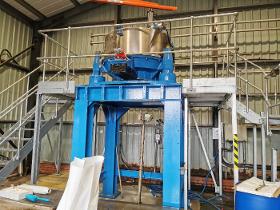
THE FILTER PRESS COMPANY LTD
United Kingdom
We supply fully refurbished equipment, including Centrifuges, Nutsche Filter Dryer, Filter Presses and various other pieces of plant and equipment.
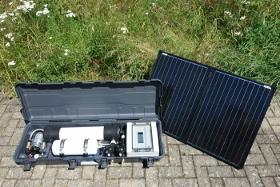
SOLARSPRING GMBH MEMBRANE SOLUTIONS
Germany
"The MBS-Outdoor from SolarSpring is a compact and innovative water treatment plant.The system guarantees a reliable and safe water supply from contaminated and microbiologically contaminated water sources without the use of Chemicals. Tecnical data: Nominal flow rate: 50-200l/h Energy consumption: 40W Weight: 22kg"
Request for a quoteDo you sell or make similar products?
Sign up to europages and have your products listed
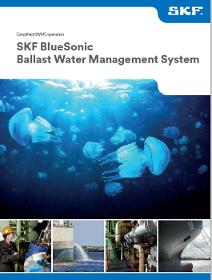
N. BOGDANOS MARINE BUREAU LTD.
Greece
It is our great pleasure to introduce to your esteemed company BlueSonic, the IMO D2 & USCG-approved Ballast Water Management System of our renown principal SKF, covering in optimal way your vessels’ BWT needs for any capacity from below 250m3/h and up to 1,500m3/h. SKF’s BlueSonic BWMS is designed with your vessels’ needs in mind and is based on the experience collected for BWMS installed during last decade, eliminating known defects of many of them and focusing on sound technologies that avoid a single day’s delay in vessel schedule SKF’s BlueSonic retrofits are based on 360° project management, i.e. from system design, 3D-scanning, installation on board (incl. piping & wiring) to integration into the existing Ballast Water System, Class-Certification, crew training and the 24/7 availability of SKF’s global network.
Request for a quote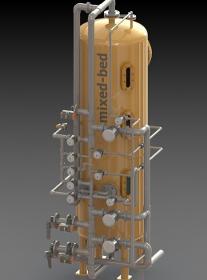
ENKI WATER TREATMENT TECH. LTD
Turkey
Both cation and anion resin can be feed in to an ion exchanger tank and mixed to create a mixedbed ion exchanger. A mixedbed ion exchanger is more complicated than other types of ion exchangers because it has to separate and regenerate the two resins. The carefull mixing of the cation and anion resin allows a very high degree of deionization. Mixed bed ion exchangers produce the highest quality demineralized water of any of the ion exchanger units. Working mixedbed ion exchangers deionize water with up to 50 ppm TDS (Total Dissolved Solids). Polishing mixedbed ion exchangers are located after cation and anion exchangers or reverse osmosis units Strong acid cation and strong base anion resins are used in mixedbed ion exchangers, as complete demineralization is the objective. A small volume of inert resin can also be used to facilitate separation of the cation and anion resin beads during regeneration
Results for
Wastewater treatment systems - Import exportNumber of results
20 ProductsCountries
Category
- Water treatment, industrial - systems and equipment (13)
- Water treatment products (2)
- Associations and organisations (1)
- Industrial waste management (1)
- Measurement - Equipment & Instruments (1)
- Tanks, plastic (1)
- Water degreasing - equipment and installations (1)
- Water purifying products (1)
- Water retreatment - equipment and installations (1)